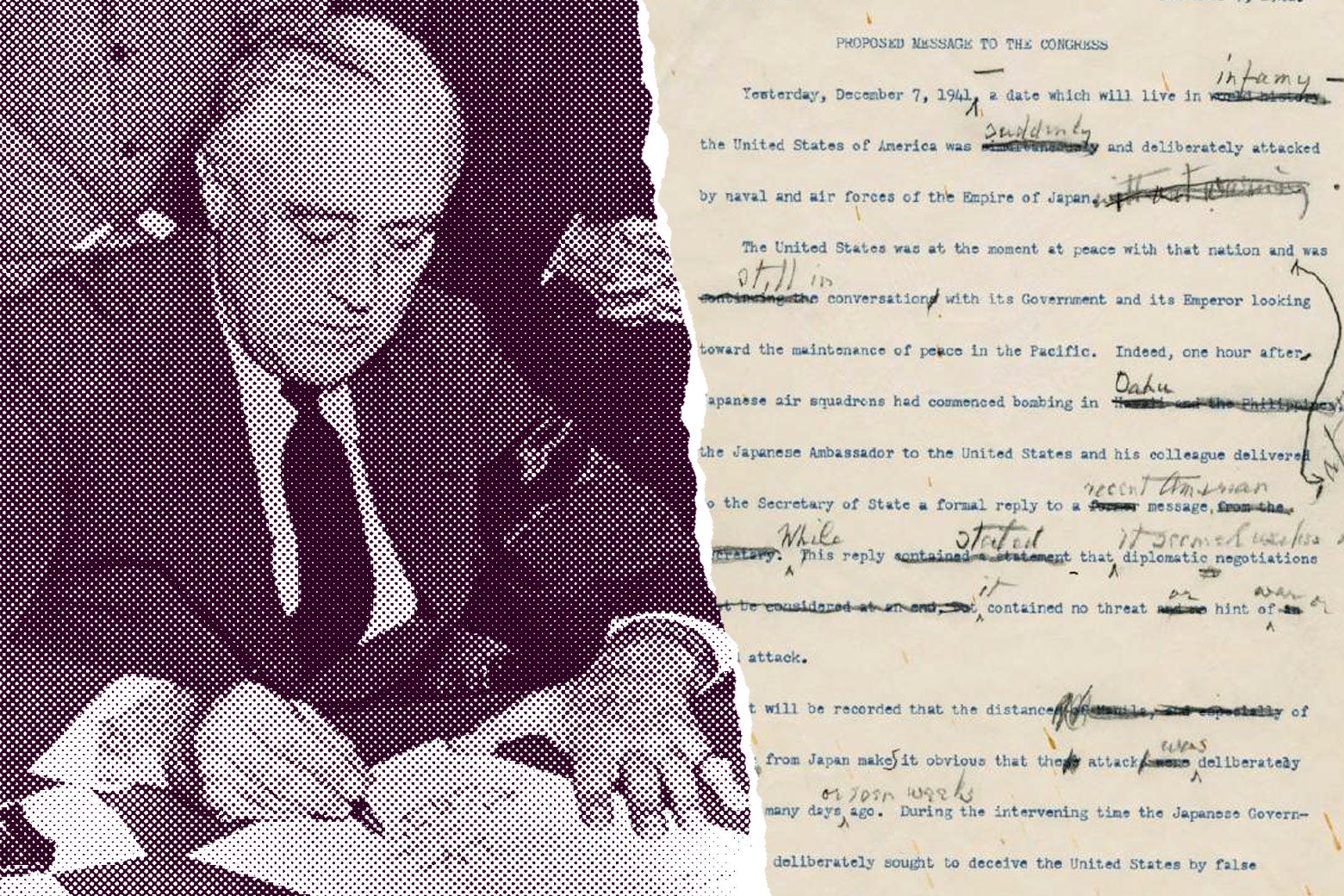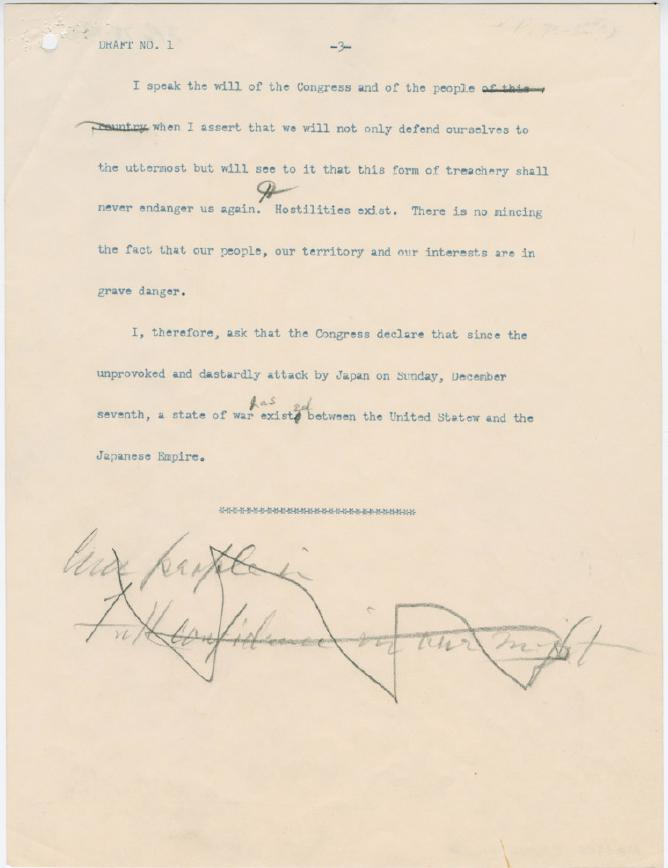The Vault is Slate’s history blog. Like us on Facebook, follow us on Twitter @slatevault, and find us on Tumblr. Find out more about what this space is all about here.

Following the Japanese attack on Pearl Harbor, Franklin Roosevelt drafted his Dec. 8, 1941 speech to Congress without the aid of his speechwriters, dictating to secretary Grace Tully. This draft shows the quick annotations and edits that the President made on a first pass; an article in the National Archives’ magazine Prologue contains pages from later drafts, as well as the final version.
The famous “date which will live in infamy” line was first drafted as “date which will live in world history.” As historian Emily S. Rosenberg writes, this substitution in the first line of the speech was telling. After a decade of isolationist sentiment, Roosevelt could not do what Woodrow Wilson did during World War I: advance a multilayered argument for American involvement, “agoniz[ing] over the violence of war,” and “advanc[ing] idealistic and lofty goals to justify participation.”
Instead, as Rosenberg argues, FDR stressed a simple, powerful narrative, tapping into past American legends. He juxtaposed the “treachery” and deception of the attack with the “righteous might” of the people who would respond, keeping the message short and simple, and asking for immediate action.
The President also edited the speech so that the assault on America was front and center, striking mention of the concurrent attack on the Philippines from the first page and, in a later draft, identifying Oahu as an “American island,” for any listeners who might not be familiar with the relationship between Hawaii (which was not yet a state) and the United States.
Roosevelt delivered the speech to a joint session (and to radio listeners) at 12:30 p.m. on Dec. 8. Congress voted to declare war against Japan by the end of the day.
Thanks to historian Mary Dudziak for her help.

Franklin D. Roosevelt Presidential Library and Museum.

Franklin D. Roosevelt Presidential Library and Museum.